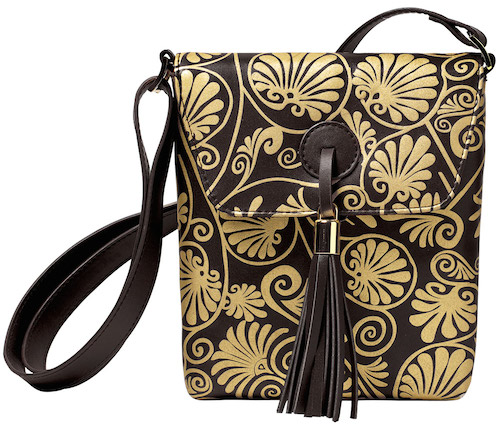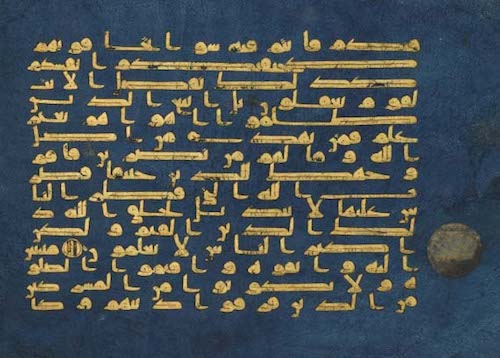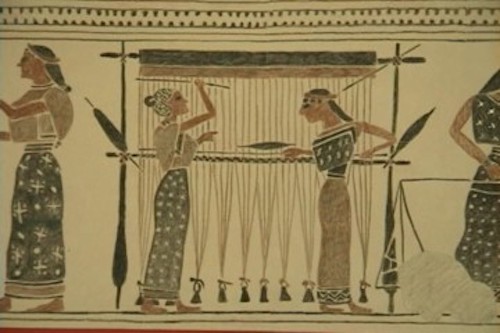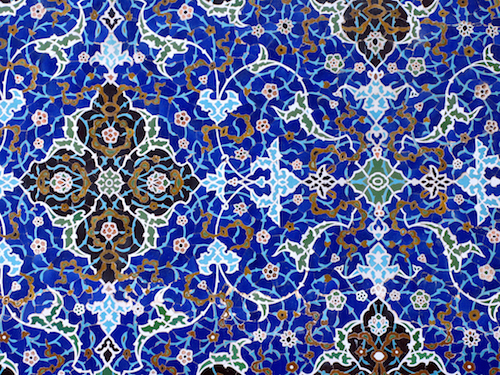
David Larsen is the Swiss Army knife of friends. Poet, Arabist, visual artist, classicist, guerilla chef and hip-hop whiz, he’s that “gateway” person who turns you on to interests you didn’t know you had. He’s also one of the last people I know who uses the U.S. Postal Service. If anything besides junk or bills arrives in the mail, it’s usually from “LRSN.” Over the years he’s sent old translations of Sufi masters, mid-century picture books on the wonders of civil engineering, back issues of journals of Persianate studies, monographs on Nostradamus, and guides to the fauna of the ancient Near East.
So it’s natural that whenever I’m in New York, I ask David what I should see at the Met. Once he sent me winding through the galleries of the Islamic art collection in search of the “Blue Qur’an.” I’d expected something big and breathtaking; he’d described it in such glowing terms. Instead I found a framed page no bigger than a leaf from an economics textbook, a deep and royal blue set off by a few gold lines in Kufic script. After The Temple of Dendur and the armor and the roomfuls of masterworks, it was a tiny oasis of wonder against the shouty monumentality.

On my last trip, David said I should see palmettes. That’s a little like telling a visitor to Disneyland to look for the janitors; ubiquitous and unnoticed, but crucial to the twinkle. The palmette is that leafy motif the Greeks slapped onto any dead space in their platters or urns. Handles, bases, necks, lips, borders, bottoms, stems: you’ll find palmettes on all of them, with a frequency that starts to seem obsessive once you think to look. David didn’t tell me why I ought to be looking, but later he sent an article about the connection palmettes may have had to ancient funeral rites, as representations of the garlands Greeks tied to the graves of their loved ones. If this is right, the palmette’s got the melancholy charge of a lost language—what was symbol for the Greeks is just style for us. It’d be like a Martian thinking swastikas or crosses were only pleasing patterns earthlings happened to enjoy.
Through the palmette, and the interest David fired, I came across Alois Riegl. Riegl’s a giant in the history of ornament, tragically cut down by cancer at the age of 47. His 1893 Stilfragen—translated to English as “Problems of Style,” but which I like to hear as “Style Questions”—laid the rail for I guess what you’d call the science of ornament, which seeks to explain the origin and transmission of decorative motifs across different cultures and times. Germans in particular worked up a lather over these questions in the 19th century, and Riegl took the field to battle two prevalent ideas. The first is that designs are the product of the technical means used to make them. Weaving, in particular, invites symmetry along a central axis, and pattern across the weave—insert a colored thread or two, and design of a sort happens all by itself. (Maria Damon, is this right?)
This materialist take on ornament’s roots calls to mind those theories of poetry that relate Modernist spacing to the typewriter, or the contemporary sense of the line to the iPhone and tweet. (Steve Evans’s subtle work on recording technologies and the “phonotextual braid” fits here, too.) For Riegl, the “form follows fabrication” story of design, despite its attractions, was too crudely Darwinian. It leaves artists sweeping up after technology’s elephant, waiting around for Google before thinking to cut ‘n’ paste. He doubts that ancient art “evolved” along with advances in technique—Riegl was early to recognize the sophistication and beauty of prehistoric art, just then coming to light in the caves of Dordogne—and he scrambles “early/middle/late” in the timeline of ornament current in his day, where Geometric zigzags and bredes were seen as loom-born designs, arriving prior to more “advanced” curvilinear forms.
(This may be a good place to mention that “text” and “textile” share the same root; that braiding and writing both happen in lines; that poiesis means “making”; and that we think in threads, spin yarns, weave tales, etc.)

Riegl’s second beef was with the mimetic theory of design, which would have decorative patterns reflect objects in nature. The lotus motif, for instance—the basis for the palmette—either depicts the flower that grows outside your house if you happen to live along the Nile, or gets copied from someone who’s got lotus and a Nile outside. Lotus designs proliferated across the ancient Near East, in regions that had never so much as seen the flower (much like the oryxes that run through the Arabic qasida). Riegl felt copying couldn’t fully account for the persistence of these vegetal motifs. That took too much away, he thought, from the generations of creative crafters adapting inherited forms to their own tastes and fancies. In fact, he speculated that naturalization—the urge to make designs look more like their models in nature—was a later development that emerged from “gradually and subtly naturalizing and enlivening the traditional, geometricized vegetal ornaments.” (He’s especially sweet on Greek and Islamic tendrils.)

Riegl’s thoughts on design help me to think about form in poetry. I find it easier to approach poetic form in terms of motif and pattern than as architecture or structure. I think affect in poetry is closer to the tendril than the lotus; a crafty “enlivening” of inherited tropes, not a flattened depiction of an original emotion. I like the openhanded implications of Riegl’s theory, which puts appropriation and adaptation at the heart of the creative act.
Ornament is also largely anonymous, driven less by genius innovators than a community of in-the-know craftspeople working steadily over long timespans. I cotton more to that than to the idea of poetry as a parade of “creative disruptions,” or a succession of academic fads. Riegl theorized about the existence of a Kunstwollen: a “will to art” that affirmed the freedom of the creative act from exclusively material or mimetic demands, but within the framework of collective endeavor. This helps to make sense of the inevitable sameyness you find in contemporary poetry, or in any contemporary art that hasn’t been presorted by the anthologists, and gives it a positive spin. Where we sound like one another, we’re giving voice to the Kunstwollen—it’s like the Zeitgeist with the auto-pilot switched off, each of us invited to take a turn at the wheel.
Reading Clark Coolidge taught me to think of poetry as jazz, with poets as session players working riffs on a fake book of standards. Through Riegl (and LRSN), I’ve learned to imagine poetry as ornament, in the very best sense; not decorative or incidental, but loom for some of the culture’s most persistent themes, overlooked because they’re hiding in plain sight.
Koeneke was born in Omaha, Nebraska, and grew up in Tucson, Arizona, and Los Angeles. He is the author...
Read Full Biography

